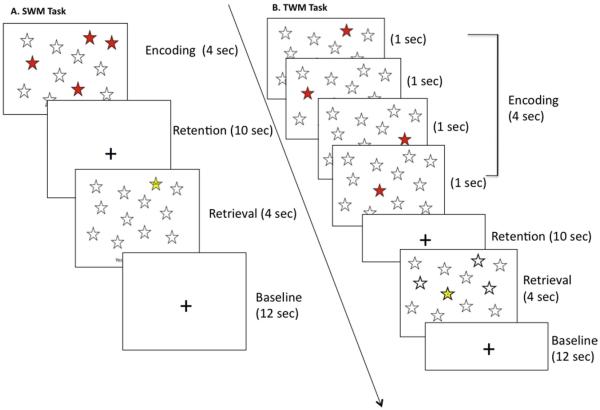Fig. 1.
(A) Trial sequence in the spatial working memory (SWM) task. In the encoding phase, participants saw four red stars and eight white stars for 4 s. Participants were instructed to remember the four positions occupied with the red stars. After the stars disappeared, participants saw a central fixation cross for 10 s (the retention phase). During the retention period, participants were instructed to look at the fixation cross while covertly rehearse the four previously occupied location. After the retention phase, the twelve stars re-appeared with one star was colored yellow (a probe). Participants were asked to judge and respond whether the location of the probe was preoccupied with one of the red stars in the encoding phase. Participants had 4 s to respond, and then, they saw a central fixation cross for 12 s until the next trial begins. (B) Trial sequence in the temporal working memory (TWM) task. In the encoding phase, participants were presented with 12 stars in each trial, but in this task one of the stars was colored red and it changed its location every second during 4 s. Participants were asked to encode the order of the four positions of the red star in each trial. During the retention period, participants were asked to look at the central fixation cross while covertly rehearse the temporal order of the previous four positions with red stars. In the retrieval phase, 12 white stars reappeared and one of them was colored yellow with a number (one, two, three, or four) superimposed on top. Participants were asked to judge whether the number on the star matched to the correct serial position in which it had appeared. The timing of the each phase was identical to those in the SWM task. (For interpretation of the references to color in this legend, the reader is referred to the web version of the article.)

